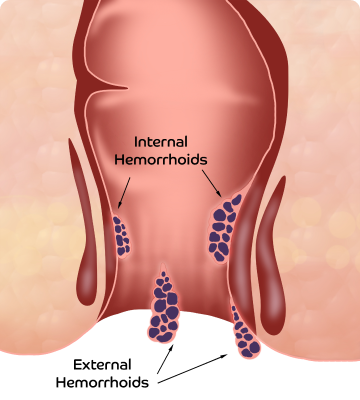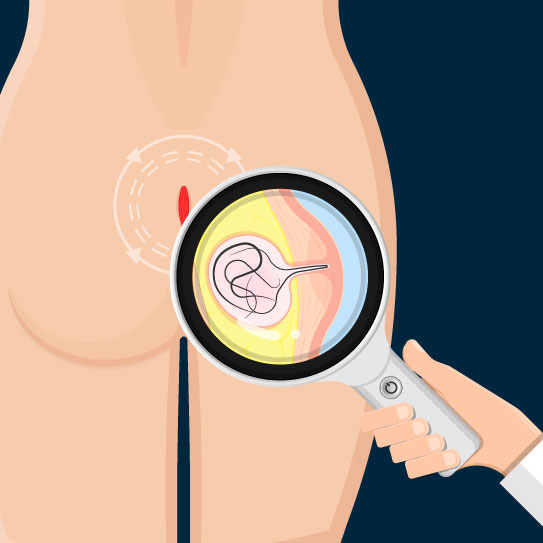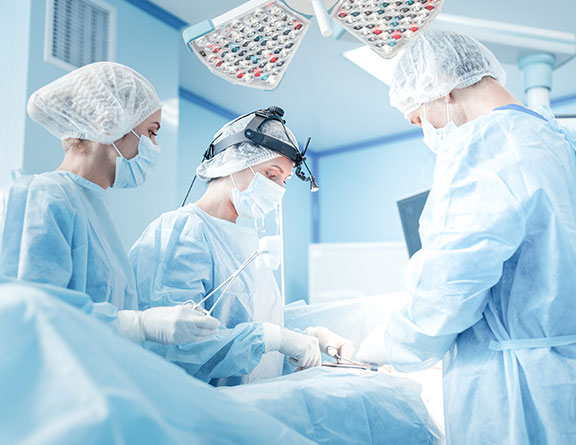Today’s lifestyle has made everyone a couch potato. The majority of the day is spent either sitting or standing. People of Patna were not much aware of pilonidal sinus which is a narrow stretch containing a bunch of hair developing beneath the skin within the buttocks. It is a sort of skin infection which leads to the problem in sitting, standing or making any body movement.
In Patna, this condition mostly affects men and is also common in young adults. It’s more common in people who sit a lot, like cab drivers, people who do desk jobs and shopkeepers that contribute to the majority of the population of Patna which is nearly 57%.
The signs of the infection include:
- Pain while standing or sitting
- Swelling or cyst
- Sore skin around the buttock area
- Pus or blood from the abscess
- Foul smell
- Hair protruding from the lesion
- Formation of holes in the skin
Laser treatment for pilonidal sinus is the most preferred procedure these days in Patna. The minimally invasive procedure done using laser surgery. The recovery is fast as you can start walking the same day after the laser surgery. There need not be any change in your toilet patterns. You will probably need time off work, although this depends on how you are feeling and the type of work you do. After laser surgery, you can go back to a normal routine the next day.
Different surgical treatments for pilonidal sinus
Here are the different surgical treatments for pilonidal sinus treatment:
- Laser pilonidal sinus treatment- Laser surgery for pilonidal sinus is the most effective treatment for pilonidal sinus. During the procedure, the proctologist uses a high-intensity laser beam to close off the sinus tract. The doctor removes the entire pit of the pilonidal sinus so that the infection does not recur. It is an easier and higher precision procedure to perform as compared to the earlier mentioned types of open surgery. The laser energy also promotes the faster healing of the site of the surgery. Thus, it takes a very short time to completely recover from laser surgery for the pilonidal sinus.
- Incision and drainage- Incision and drainage is an open surgical procedure recommended mostly when the cyst becomes infected. It is performed with local anesthesia to make the affected area numb. The surgeon makes an incision in the cyst to drain the infectious fluid and pus. The doctor packs the hole with gauze and leaves it open to heal. It can take up to 4-6 weeks to heal the cyst completely.
- Pilonidal cystectomy- Pilonidal cystectomy is the surgical removal of the entire pilonidal cyst. The treatment is performed after administering general/regional anesthesia. The surgeon makes a cut to remove the affected skin along with underlying hair follicles, tissues, and dead cells. If required, the doctor packs the area with surgical gauze. In cases where the infection is severe, the doctor places a tube to drain the fluid from the cyst. The tube is removed when the entire fluid is drained from the cyst.
Are there any risks and complications involved during pilonidal sinus surgery?
If performed under the guidance and supervision of a trained proctologist, surgical treatment for pilonidal sinus will not cause any risks or complications. But, like any other surgery, there might be some complications, although not severe. Some of them are:
- Trauma and bleeding to the site – If the surgery is not performed efficiently, there can be a chance of the anal tissues getting injured. Trauma and injury to the anal tissues can even lead to bleeding. If the surgery is performed by an experienced surgeon, the chances of any injury can be cut down drastically.
- Infection – Like any other surgery, infection is a common side effect/ complication in case of pilonidal sinus surgery too. Infection can lead to nausea and vomiting in the person. Infection, however, is not a very serious problem and can be treated with medicines. The chances of infection in case of open surgery is much higher than in laser surgery.
- Squamous cell carcinoma – A type of skin cancer that occurs due to uncontrolled growth of the squamous cells. The condition is not very common but not unheard of. To prevent such complications, it is extremely important that the surgery is performed by an experienced and trained surgeon.
List of Pilonidal Sinus Doctors in Patna
| 1 | Dr. Qaisar Jamal | 4.9 | 18 + Years | Shivpuri, Rajbansi Nagar, Patna, | Book Appointment |
| 2 | Dr. Neeti Neha | 5.0 | 16 + Years | Dashratha - Sipara Road, Dashratha More, Overbridge, near Sipara, Patna, Bihar 800002 | Book Appointment |










Pristyncare%20Clinic.webp)

.svg)









